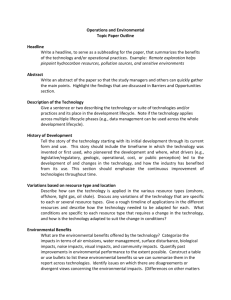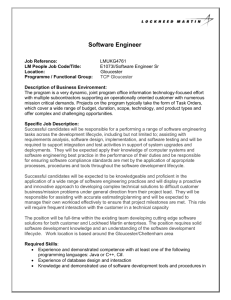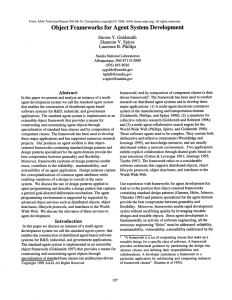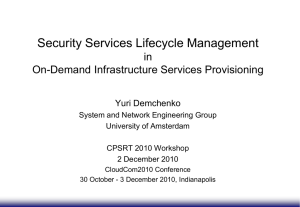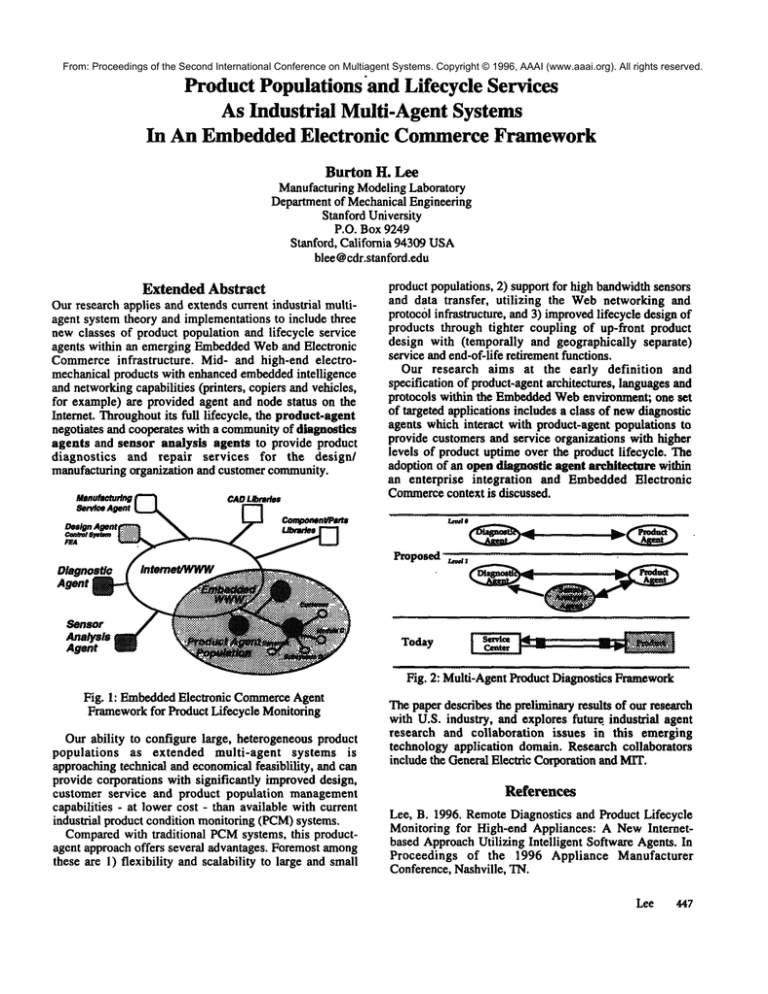
From: Proceedings of the Second International Conference on Multiagent Systems. Copyright © 1996, AAAI (www.aaai.org). All rights reserved.
Product Populationsand Lifecycle Services
As Industrial Multi-Agent Systems
In An EmbeddedElectronic CommerceFramework
Burton H. Lee
Manufacturing Modeling Laboratory
Department of Mechanical Engineering
Stanford University
P.O. Box 9249
Stanford, California 94309 USA
blee@cdr.stanford.edu
ExtendedAbstract
Our research applies and extends current industrial multiagent system theory and implementations to include three
new classes of product population and lifecycle service
agents within an emerging EmbeddedWeband Electronic
Commerceinfrastructure.
Mid- and high-end electromechanical products with enhanced embeddedintelligence
and networkingcapabilities (printers, copiers and vehicles,
for example) are provided agent and node status on the
Internet. Throughoutits full lifecycle, the product-agent
negotiates and cooperates with a communityof diagnostics
agents and sensor analysis agents to provide product
diagnostics
and repair services for the design/
manufacturing organization and customer community.
Hjnutsetur~no ~
can
t~
Anal~i~~~
Agent
--
product populations, 2) support for high bandwidthsensors
and data transfer, utilizing the Webnetworking and
protocol infrastructure, and 3) improvedlifecycle design of
products through tighter coupling of up-front product
design with (temporally and geographically separate)
service and end-of-life retirement functions.
Our research aims at the early definition
and
specification of product-agent architectures, languages and
protocols within the EmbeddedWebenvironment; one set
of targeted applications includes a class of new diagnostic
agents which interact with product-agent populations to
provide customers and service organizations with higher
levels of product uptime over the product lifecycle. The
adoption of an open diagnostic agent architecture within
an enterprise integration
and Embedded Electronic
Commercecontext is discussed.
Today
~~
~
Fig. 1: EmbeddedElectronic CommerceAgent
Frameworkfor Product Lifecycle Monitoring
Our ability to configure large, heterogeneous product
populations
as extended multi-agent
systems is
approaching technical and economicalfeasiblility, and can
provide corporations with significantly improved design,
customer service and product population management
capabilities - at lower cost - than available with current
industrial product condition monitoring (PCM)systems.
Comparedwith traditional PCMsystems, this productagent approach offers several advantages. Foremost among
these are 1) flexibility and scalability to large and small
Fig. 2: Multi-Agent Product Diagnostics Framework
The paper describes the preliminary results of our research
with U.S. industry, and explores futu~ industrial agent
research and collaboration issues in this emerging
technology application domain. Research collaborators
include the General Electric Corporation and MIT.
References
Lee, B. 1996. RemoteDiagnostics and Product Lifecycle
Monitoring for High-end Appliances: A NewInternetbased ApproachUtilizing Intelligent Software Agents. In
Proceedings of the 1996 Appliance Manufacturer
Conference, Nashville, TN.
Lee
447





